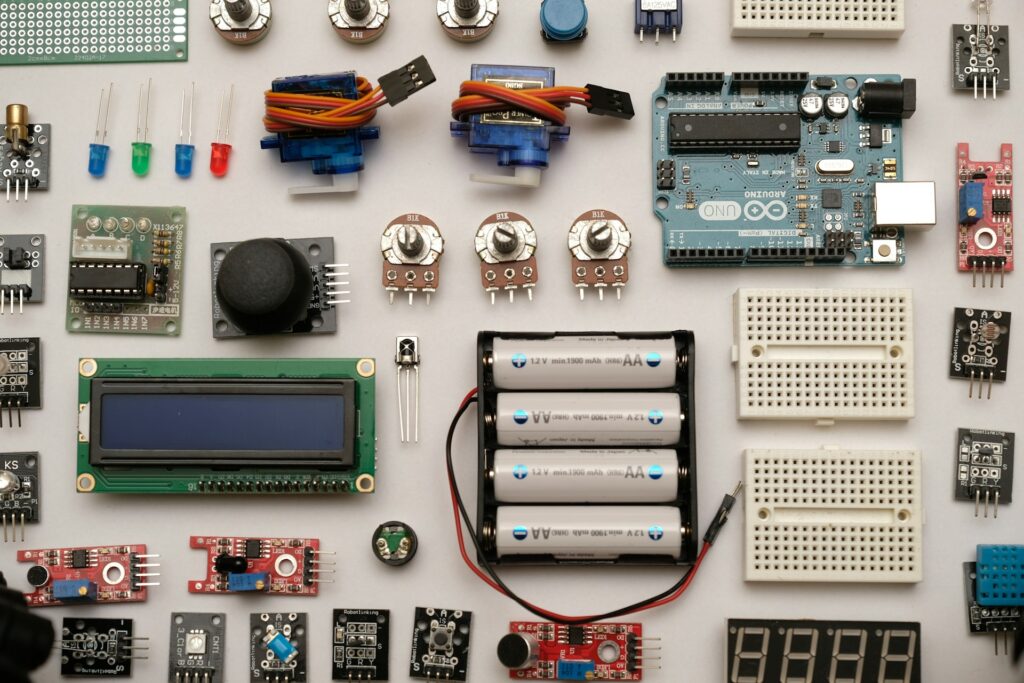Introduction: In today’s digital age, the Internet of Things (IoT) stands as a cornerstone of technological advancement, intertwining the physical and digital worlds like never before. This article delves into the intricacies of IoT, exploring its definitions, significance, and transformative potential.
What is the Internet of Things (IoT)?
The Internet of Things refers to a network of interconnected devices and objects that communicate and share data seamlessly over the internet. These devices range from smartphones and wearables to household appliances, vehicles, and industrial machinery.
Why is IoT Important?
The significance of IoT lies in its ability to enhance efficiency, productivity, and convenience across various domains. By enabling remote monitoring, automation, and data-driven decision-making, IoT revolutionizes how we interact with our surroundings and conduct daily activities.
Types and Categories
IoT encompasses a diverse array of devices and applications, categorized based on their functionality and purpose.
Consumer IoT
Consumer IoT devices cater to individual users and households, offering solutions for entertainment, health monitoring, home security, and more. Examples include smart speakers, fitness trackers, and connected home appliances.
Industrial IoT (IIoT)
Industrial IoT focuses on optimizing processes and operations in sectors such as manufacturing, agriculture, energy, and logistics. IIoT facilitates predictive maintenance, asset tracking, and real-time monitoring to enhance efficiency and reduce downtime.
Healthcare IoT
Healthcare IoT solutions encompass medical devices, wearables, and remote monitoring systems that enable personalized healthcare delivery, chronic disease management, and telemedicine services, improving patient outcomes and healthcare accessibility.
Smart Cities
IoT plays a crucial role in building smart cities by integrating technology into urban infrastructure for efficient resource management, traffic control, environmental monitoring, and public safety enhancements.
Symptoms and Signs
Understanding the symptoms and signs of IoT implementation helps identify its impact and potential challenges.
Increased Connectivity
One prominent symptom of IoT adoption is the proliferation of connected devices, leading to a hyper-connected ecosystem where data flows seamlessly between devices and systems.
Data Overload
The exponential growth of IoT-generated data poses challenges related to data storage, processing, and analysis, necessitating robust infrastructure and analytics capabilities.
Security Concerns
As the number of connected devices rises, so do cybersecurity threats, including data breaches, privacy violations, and ransomware attacks, highlighting the importance of IoT security measures and protocols.
Causes and Risk Factors
Several factors contribute to the rise of IoT and influence its adoption across various sectors.
Technological Advancements
Advancements in sensor technology, wireless connectivity, cloud computing, and artificial intelligence drive the development and deployment of IoT solutions, making them more accessible and cost-effective.
Demand for Efficiency
The need for improved efficiency, resource optimization, and operational transparency motivates organizations to embrace IoT solutions to streamline processes and gain competitive advantages.
Regulatory Frameworks
Government initiatives and regulations aimed at promoting digitalization, sustainability, and innovation incentivize businesses to invest in IoT technologies to comply with standards and requirements.
Diagnosis and Tests
Diagnosing the readiness and effectiveness of IoT implementation involves assessing various technical and strategic factors.
Network Infrastructure Assessment
Evaluating the existing network infrastructure’s capacity, reliability, and scalability is crucial to support the influx of IoT devices and data traffic.
Compatibility Testing
Testing the compatibility of IoT devices and platforms ensures seamless integration and interoperability, minimizing compatibility issues and system downtime.
Performance Metrics
Establishing key performance indicators (KPIs) allows organizations to measure the effectiveness and impact of IoT deployments, guiding continuous improvement efforts.
Treatment Options
Implementing effective IoT solutions requires careful planning, implementation, and optimization strategies.
Scalable Architecture Design
Designing scalable and resilient IoT architectures ensures flexibility and adaptability to accommodate future growth and technological advancements.
Data Analytics and Insights
Harnessing the power of data analytics and machine learning enables organizations to derive actionable insights from IoT-generated data, driving informed decision-making and predictive maintenance strategies.
Security Measures
Implementing robust security measures, including encryption, authentication, and access controls, safeguards IoT ecosystems against cyber threats and vulnerabilities.
Preventive Measures
Proactive measures are essential to mitigate risks and maximize the benefits of IoT adoption.
Employee Training and Awareness
Providing comprehensive training and raising awareness among employees about IoT security best practices and protocols minimize human errors and vulnerabilities.
Regular Updates and Patch Management
Maintaining IoT devices and systems up-to-date with the latest firmware updates and security patches protects against known vulnerabilities and exploits.
Risk Assessment and Compliance
Conducting regular risk assessments and ensuring compliance with industry regulations and standards mitigate legal and reputational risks associated with data breaches and non-compliance.
Personal Stories or Case Studies
Real-life examples illustrate the transformative impact of IoT across various industries and contexts.
Smart Agriculture: Optimizing Crop Yield
By leveraging IoT sensors and data analytics, farmers can monitor soil moisture levels, crop health, and weather conditions in real-time, enabling precision agriculture practices and maximizing crop yield while minimizing resource usage.
Connected Healthcare: Remote Patient Monitoring
IoT-enabled medical devices allow healthcare providers to remotely monitor patients’ vital signs, medication adherence, and health status, improving care coordination, early detection of health issues, and patient outcomes, especially for individuals with chronic conditions or limited mobility.
Expert Insights
Experts in the field of IoT offer valuable perspectives on its current state and future directions.
Dr. Emily Smith, IoT Researcher
“The Internet of Things holds immense potential to transform industries and improve quality of life, but it also presents unprecedented challenges, particularly in terms of privacy, security, and data governance. As IoT continues to evolve, interdisciplinary collaboration and ethical considerations are crucial to harnessing its benefits responsibly.”
Conclusion
In conclusion, the Internet of Things represents a paradigm shift in how we interact with technology and the world around us. By connecting devices, data, and people, IoT holds the promise of revolutionizing industries, enhancing efficiency, and enriching our daily lives. However, realizing this potential requires addressing challenges related to security, privacy, and ethical concerns while fostering innovation and collaboration. Embracing IoT responsibly can pave the way for a more connected, intelligent, and sustainable future.

